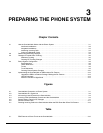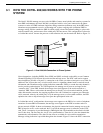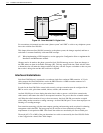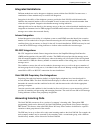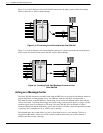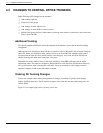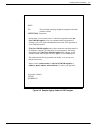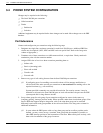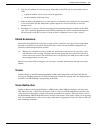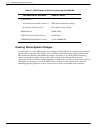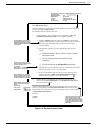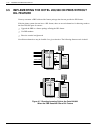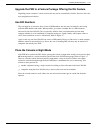
3-6 Installation and Maintenance Volume
Octel 200/300 S.4.1 PB60019−01
3.3 CHANGES TO CENTRAL OFFICE TRUNKING
Public Exchange (PE) changes may be needed to
- Add trunking capability
- Create new trunk groups
- Add, change, or delete 800 services
- Add, change, or delete DID or Centrex services
- Split the hunt group (directory listed number), allowing some trunks to be directed to the console and
some to Octel 200/300
Additional Trunking
The specific number of PBX lines and trunks depends on the number of ports and the desired trunking
arrangement.
Although the Octel 200/300 port drops off after it transfers a call, the PE trunk is still occupied during the
entire call. When you decide how many trunks to direct to the Octel 200/300, remember each trunk is
occupied from the time the call is placed until the caller hangs up. As a result, the Octel 200/300 can
answer incoming calls from more trunks than it has ports.
Determine how many trunks to direct to the Octel 200/300 by using PBX traffic data and the traffic
engineering tables. The tables are designed to help decide how to use the Octel 200/300 most effectively
for a given situation. After collecting the traffic data, it may be necessary to order changes from the
telephone company to add or alter the number of trunks.
Ordering PE Trunking Changes
Contact the customer about making arrangements for changes in trunking. Typically, these changes
require significant lead time. The PE requires an agency letter from the customer authorizing you to act
on their behalf.
Figure 3-5 is a sample agency letter you may want to use.




